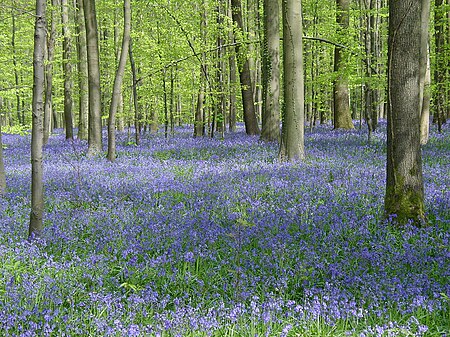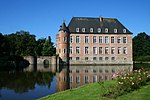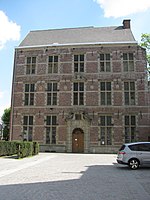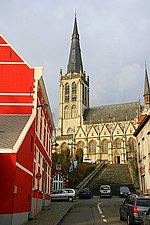Hallerbos
Flemish Brabant geography stubsForests of BelgiumGeography of Flemish BrabantTourist attractions in Flemish Brabant

The Hallerbos (Dutch for Halle forest) is a forest in Belgium, covering an area of 552 ha (1,360 acres). It is mostly situated in the municipality of Halle, in Flemish Brabant and has also a little part in Walloon Brabant. The forest is known in the region for its bluebell carpet which covers the forest floor for a few weeks each spring, attracting many visitors.Visitors can reach there either by their own vehicle or through public transport. For public transport, you can reach Halle railway station and get a bus to the entrance of the forest.
Excerpt from the Wikipedia article Hallerbos (License: CC BY-SA 3.0, Authors, Images).Hallerbos
Rilroheidestraat, Beersel
Geographical coordinates (GPS) Address Nearby Places Show on map
Geographical coordinates (GPS)
| Latitude | Longitude |
|---|---|
| N 50.704 ° | E 4.288 ° |
Address
Hallerbos
Rilroheidestraat
1653 Beersel
Flemish Brabant, Belgium
Open on Google Maps





